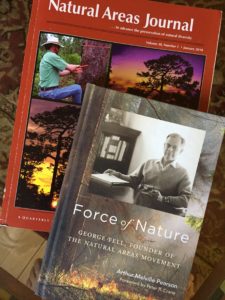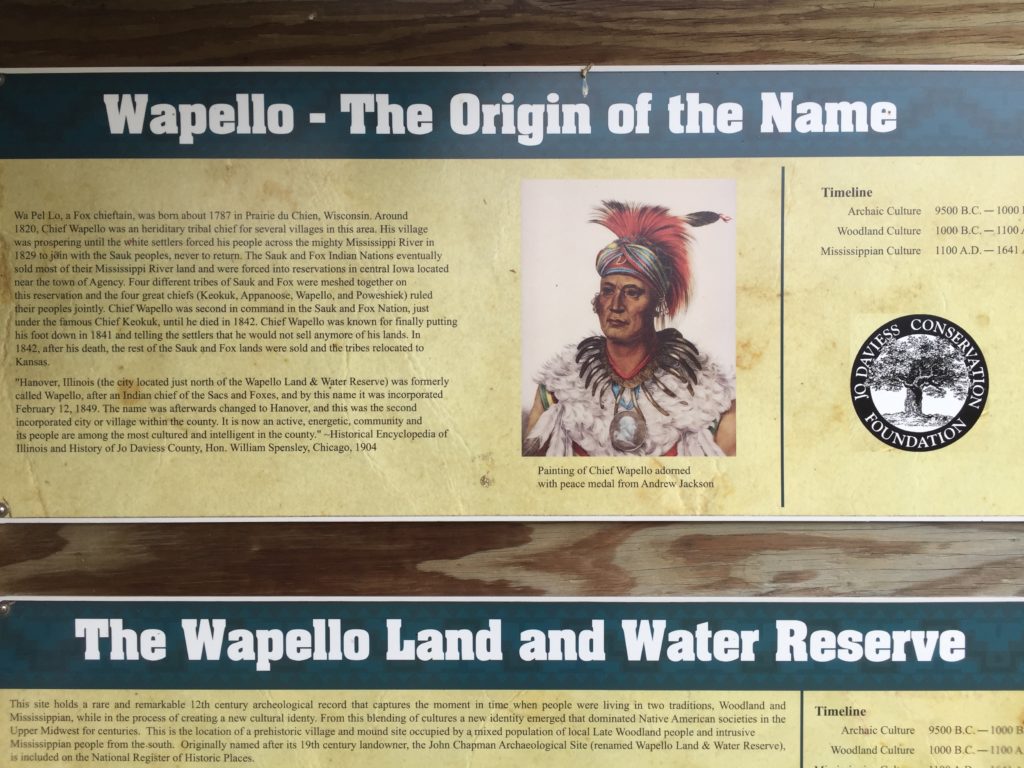 Books seldom sell themselves. Especially if you write a biography of an important but little known conservation leader.
Books seldom sell themselves. Especially if you write a biography of an important but little known conservation leader.
Fortunately, I’ve been having a great time barnstorming the state on my book tour, preaching the gospel of George Fell. Born in Rockford, Illinois, he was about as unlikely a conservation hero as you can imagine — no pedigree, no job, no money, no connections, no experience. And yet, through sheer tenacity, he protected more land in Illinois than anyone before or since. More importantly, he was the driving force behind the establishment of The Nature Conservancy, the Illinois Nature Preserves Commission and other powerful engines of conservation that will protect even more lands far into the future.
Another thing I love about the book tour is meeting the conservation heroes of today — those who build upon Fell’s legacy to protect the lands they love.
 This past weekend, my wife, Susan, and I traveled to the Drifltess Area of northwest Illinois to give a talk to the Jo Daviess Conservation Foundation. What a great group of folks. Executive director Steve Barg gave some introductory remarks about JDCF, including the fact that since its founding in 1993 it has protected nearly 7,000 acres of land.
This past weekend, my wife, Susan, and I traveled to the Drifltess Area of northwest Illinois to give a talk to the Jo Daviess Conservation Foundation. What a great group of folks. Executive director Steve Barg gave some introductory remarks about JDCF, including the fact that since its founding in 1993 it has protected nearly 7,000 acres of land.
 After my “revival tent sermon” about George Fell, my wife and I joined the staff, board and supporters for a country supper of brats, sauerkraut, and cheddar beer soup. In addition to the delicious food, we relished learning about the different ways folks help preserve and celebrate the lands they love — as donors, as volunteers, as nature photographers, artists and writers, and by placing conservation easements on their own lands.
After my “revival tent sermon” about George Fell, my wife and I joined the staff, board and supporters for a country supper of brats, sauerkraut, and cheddar beer soup. In addition to the delicious food, we relished learning about the different ways folks help preserve and celebrate the lands they love — as donors, as volunteers, as nature photographers, artists and writers, and by placing conservation easements on their own lands.
 The next day, Steve treated Susan and I to a tour of Casper Bluff Land and Water Reserve. Whereas only the highest quality natural lands may be dedicated as Illinois Nature Preserves, areas that harbor significant natural and cultural heritage may be dedicated as Land and Water Reserves. Either way, these formal dedications by the Illinois Nature Preserves Commission afford and exceptional level of protection.
The next day, Steve treated Susan and I to a tour of Casper Bluff Land and Water Reserve. Whereas only the highest quality natural lands may be dedicated as Illinois Nature Preserves, areas that harbor significant natural and cultural heritage may be dedicated as Land and Water Reserves. Either way, these formal dedications by the Illinois Nature Preserves Commission afford and exceptional level of protection.
 Casper Bluff is a stand out reserve both for its panoramic views of the Mississippi River and its high concentration of effigy mounds from the middle to late Woodland Society of Native Americans, circa A.D. 700 to A.D. 1,000. Among the protected effigies is the last, intact bird or thunderbird with a wingspan of 216 feet.
Casper Bluff is a stand out reserve both for its panoramic views of the Mississippi River and its high concentration of effigy mounds from the middle to late Woodland Society of Native Americans, circa A.D. 700 to A.D. 1,000. Among the protected effigies is the last, intact bird or thunderbird with a wingspan of 216 feet.
JDCF does a terrific job not only protecting important sites, but providing rich interpretive signage. For instance, at Wapello Land and Water Reserve — a sacred site for two late Woodland cultures — I learned that Chief Wapello was among the last Fox chieftains to resist selling any more ancestral lands in the Driftless area. I learned, too, that the original name for Hanover — the town in which the reserve is located — was Wapello.
 On the last day of our three-day weekend, Susan and I continued our quest to visit all 400+ Illinois Nature Preserves. There are at least three in Jo Daviess County.
On the last day of our three-day weekend, Susan and I continued our quest to visit all 400+ Illinois Nature Preserves. There are at least three in Jo Daviess County.
 Hanover Bluff was the first to be dedicated in the county, in 1987. It was too wet and muddy to climb the steep slopes up to the aptly-named “goat prairies” tucked amid the oak woodland communities, but we did manage to catch a glimpse of the towering bluffs.
Hanover Bluff was the first to be dedicated in the county, in 1987. It was too wet and muddy to climb the steep slopes up to the aptly-named “goat prairies” tucked amid the oak woodland communities, but we did manage to catch a glimpse of the towering bluffs.
 Wards Grove is described as “a large forested island between extensive rowcrop areas to the east and forest areas to the west. Its large size, unbroken canopy, mature understory and position with respect to other regional forested areas, make Wards Grove a very valuable site for area sensitive bird species.”
Wards Grove is described as “a large forested island between extensive rowcrop areas to the east and forest areas to the west. Its large size, unbroken canopy, mature understory and position with respect to other regional forested areas, make Wards Grove a very valuable site for area sensitive bird species.”
Last on our list was Apple River Canyon. Most folks know Apple River Canyon as a popular state park. What most don’t know is that there are dedicated Nature Preserves within many of our state, county, and municipal parks, including Apple River. This assures that the most ecologically sensitive areas of the parks have the extra level of protection they need. Not surprisingly, then, there are no established trails in the Apple River Canyon Nature Preserve. But keep an eye out for the distinctive white triangle signs for a glimpse of the very best of the best nature in all of Jo Daviess County.
